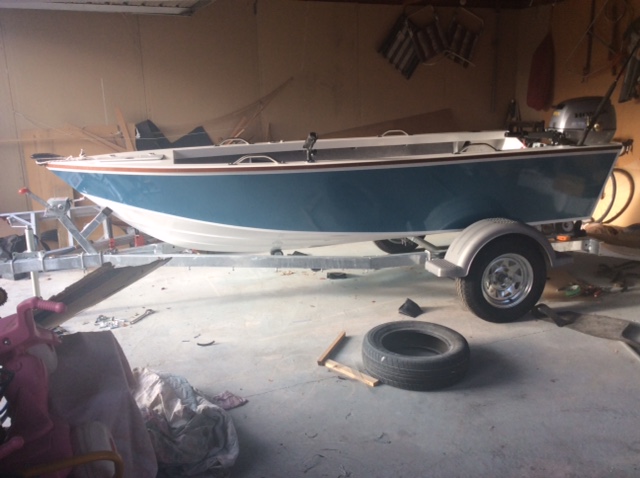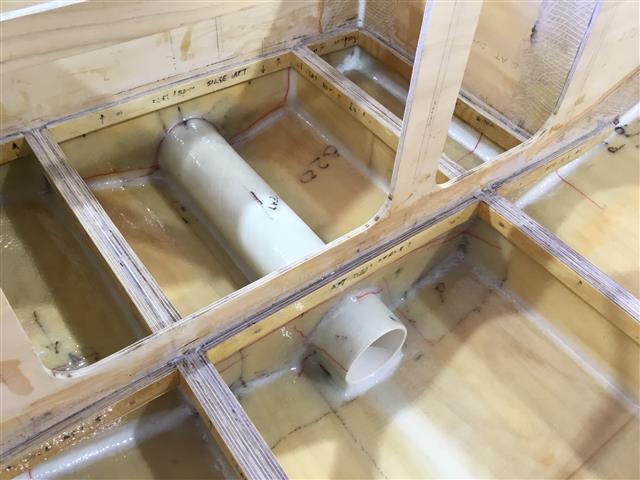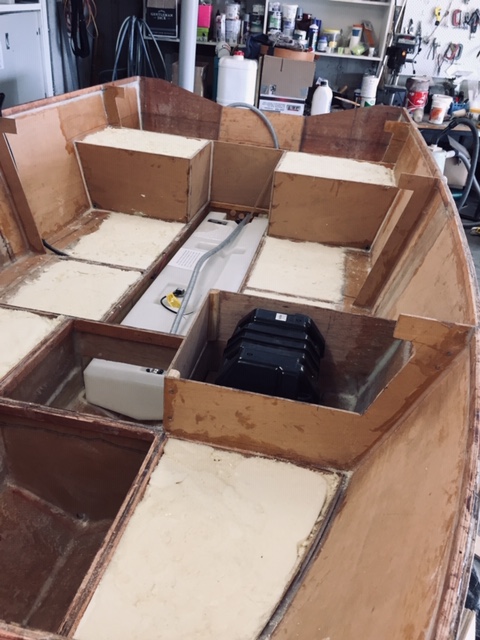EdgeTracker 365





EdgeTracker 365
Big boat attitude in a small easy package easily describes the Edge Tracker 365 in perfect detail.
We've taken the same high- tech boat building techniques used for the rest of our designs and incorporated them here, including a 18 º deadrise hull design that makes for such a such a great ride.The cockpit is open and uncluttered, giving you plenty of fish fighting room, loads of storage compartments and fish holders along the side of the hull. Also included is a recessed anchor locker, water ballast under the floor to provide heaps of stability at rest when fishing.
Easy to maintain and trailer, edge Tracker 365 will provide you with years of family fun and offshore memories.
Option 1/ This design incorporates a water ballast system that when powering up, empties out...FAST. Then when you slow down, it slowly fill again providing great stability when you've stopped or, when slow trolling
Option 2/ If you decided to not have the water ballast system, then an underfloor (or sole) fuel tank system will be needed. See pictures below where Phil decided to turn his Edgetracker 365 into a side console and having the underfloor fuel tank instead.
SPECIFICATIONS:
- Overall Hull length ......12 ft ( 3.65m)
- Beam ...... 5ft- 2in (1.57m)
- Deadrise @ Transom ...... 18 degrees
- Engine shaft length ...... L/S (20")
- Recommended Hp ...... 30 Hp
- Fuel Capacity ...... Builders Choice
- Construction …. Epoxy Fibreglass Plywood Composite Construction



Proudly Australian Designed
From the first sketch on the drafting board to the finished computer 3D modelling and CAD plans, every boat is designed in house by Mark Bowdidge (MRINA) himself.
After nearly forty years of building and designing boats, every design is specifically designed for Purpose, Performance, Seakeeping and Safety
Source: AUD @ Sat, 21 Jun.
EDGETRACKER 365 FEATURES
Just some of the features the EdgeTracker 365 includes:
- Sleek yet simple and functional lines
- Deep V 18 degree deadrise hull.
- Tiller steered
- Side pockets for all your gear plus more
- Front casting deck for lure fishing plus easy access to the front locker and trolling motor when deploying
- Portable fuel tank
- LEVEL flotation for compliance (we comply to the ABYC standards)
- Engineered to "Class" or Commercial shipping standards for those offroad or offshore fishing adventures.
- Easily handled by 1 person when trailering
- A water ballast system that when powering up, empties out...FAST. Then when you slow down, it slowly fill again providing great stability

EdgeTracker 365 Frequently Asked Questions
What is included in the EdgeTracker 365 Plans?
In regards to the EdgeTracker 365 plans, it includes:
- 11 sheets in total (7 x A1 sheet size and 4 x A0 sheet size - full size bulkhead patterns)
- Full size patterns for bulkheads/ stem frame and transom
- Builders manual
- Bill of materials
- Numerous build photo's for you to preview and assist with your build (A picture tells a thousand words" as the saying goes)
- Tip's and Tricks" e-book for building your boat
- Plus a lot more
Below is an example of the type of plans you receive

Is the EdgeTracker 365 Builders Plate Compliant?
Yes.
We use the ABYC standard (https://abycinc.org/). (We do not use the AS 1799 standard, as we feel that this standard is full of "holes). Using the ABYC standard, all boats under 20ft MUST meet LEVEL flotation. It also means that the boat must meet certain stability criteria in regards to traverse stability, wind heeling criteria and max Hp allowed.
The EdgeTracker 365, as designed exceeds the requirements for LEVEL flotation compliance. This covers the boat itself/ outboard/ people and cargo.
This standard is accepted worldwide. (Australia/ USA/ Canada and the EU)
We do not design our boats to meet BASIC flotation. To me, "Basic" flotation is dangerous.
Hope this helps

So what does the term "Ply/Composite" Construction mean?
So… what is Ply/ composite construction?
The term “composite means that if you use 2 or more materials in your construction layup, you must take into account for the mechanical properties of each material used. i.e. with Plywood and glass used we have to take into account for the materials Tensile strength/ Bending strength/ compression strength/ Shear strength and Modulus of Elasticity) in your engineering calculations. When you do this, its now "composite" construction.
Once it passes Tensile strength and bending strength for a particular area, we move to the next section. This method of engineering is applied throughout the whole boat.
Now… simply building a plywood boat and wetting out some glass on it is not composite construction. Its just a plywood boat with glass laid on.
All our Plywood and Strip plank designs are engineered as composites and in this regard, we engineer out boats to “Class” rules. In other words, we use Commercial ship standards. Here we use ABS or the "American Bureau of Shipping (https://ww2.eagle.org/en.html)
Here’s just one small area within one of our designs as an example of the calcs we do with all our designs.
I hope this helps
Mark Bowdidge (MRINA)



Can I get replace the ply/ composite structure with foam core?
No.
By doing so, your:
1/ Making the boat too light. This means the boat will float higher in the water, exposing the chines which in turn results in the moment of inertia of the waterplane being reduced which results in an unstable boat.
2/ Taking the weight out of the bottom of the boat also raises the overall centre of gravity which further adds to an unstable rolly boat. Why? Plywood has a density of approx. 600 kgm^3, whereas foam has a density between 80-240 kg/m^3 (pending foam core used). So in effect, you've taken out between 60% to 87% of the weight that's down low. Whoops. Now you have a serious problem with stability.
3/ The boat will become too "flighty" when on the plane.
BUILD THE BOAT AS PER THE PLANS and you won't have an issue.
Do I need the water Ballast System?
Yes, it required.
When sitting in the water idle or trolling slow, the water enters the ballast tank which provides high stability for the boat. However, once you hit the throttle, the water within the tank quickly empties (within seconds) as its no longer required.

No, not required.
If you decide that you'd prefer an underfloor fuel tank, then in this regard, the water ballast system is not required. (Fuel tank required no less than 70 litres)

Do you provide CNC cut files or kits?
No I do not.
So please don't ask, as refusal may offend
Can I make the EdgeTracker 365 from Aluminium?
No.
Aluminium construction requires a different method of construction and scantlings. Also, being that aluminium is far heavier compared to Ply/composite construction, everything changes. Weight/ power/ stability/ seakeeping/ safety standards and more. It all changes. This means that the boat as a whole will need to be re-designed/ re-engineered/ re-drawn and throughout all this, making sure it meets the required stability and safety standards and flotation standards in the event of swamping. (Our boats meet LEVEL flotation requirements, not BASIC flotation.)

To see more ET 365 Builders Testimonials and their boats, please click HERE







